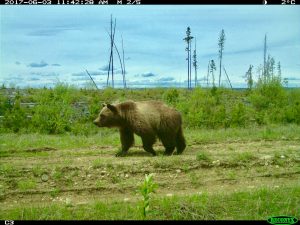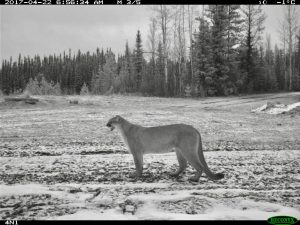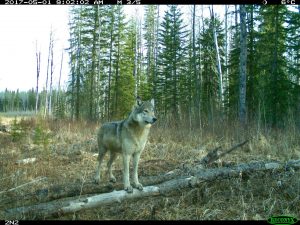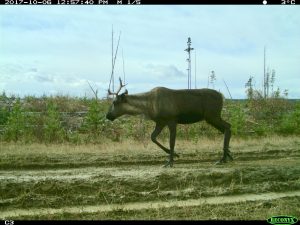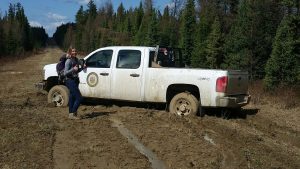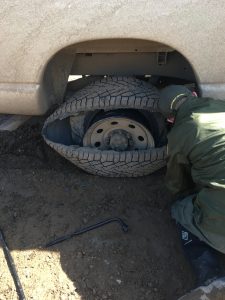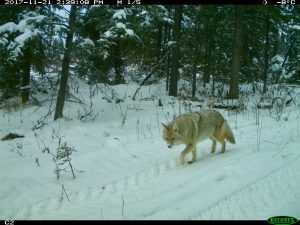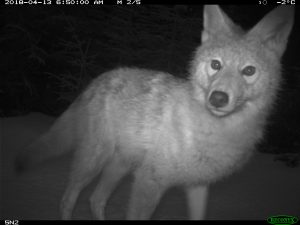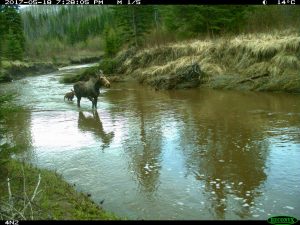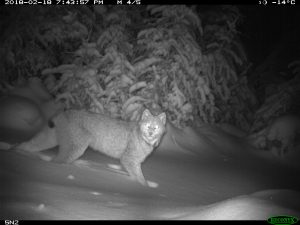May was an exciting month for me as I marked the end of my one year pilot project, and I began deployment of the rest of the cameras for my graduate research project. Hopefully by the time this is posted all of my cameras will be set up in the field and I will be well into analysis of my pilot year data. My first year of data collection came with a few hiccups, but overall I am happy to have lots of good, usable data, and even some preliminary results to share. And also lots of cool pictures, because I’m pretty sure a blog from a camera trapping lab is just an excuse to post cool wildlife pictures, right?
What I’m doing
For my MSc project I am using camera traps to evaluate the ecosystem response to caribou management activities in and around the Little Smoky caribou range in west-central Alberta. These management activities include management of forest harvest, oil and gas activities, road development, predator density, and protected areas. The purpose of these management activities is to increase caribou populations, but the effects on the rest of the wildlife community are not well understood. I will also investigate the effects on wildlife of other ecological gradients such as elevation, distance from mountains, ruggedness, and forest stand type.
To study these potential effects I am setting up remote cameras along four 100-km transects running north, south, east and west from the centre of the Little Smoky caribou range. The transects each run along a gradient from high management effort in the centre of the caribou range to low management effort at the far end of the transects. For the past year I had 18 cameras deployed in six clusters along the north transect.
What I’ve already learned
Don’t drive your truck onto muddy roads in black spruce bogs (Alberta mud is not the same as BC mud). Always put lock boxes on your cameras (black bears will mess with ANYTHING they find, and somehow figure out how to open it, and remove the batteries?!?!). I also learned how to change a flat tire in under 20 minutes (lots of practice makes perfect).
But more seriously, I can already see a pattern from the preliminary data showing lower wolf activity in the area with high caribou management efforts. And in line with ecological theory, there appears to be more coyote activity in these areas with low wolf activity. This result could be because reduced competition from wolves has caused a ‘mesopredator release’, in which coyote populations have increased due to a decreased apex predator population. Pretty cool!
Looking forward
In the next year of data collection with my full array of 60 cameras out, I hope to learn more about this possible mesopredator release, as well as to determine how it may trickle down to smaller predators such as foxes and marten. I also plan to investigate whether coyotes and wolves shift their seasonal or daily activity patterns to avoid competing with each other. Additional data from the full array of cameras should help me to gain a better understanding of how ecological gradients and caribou management activities affect ungulates other than caribou (deer, elk, and moose). I also hope to observe wolf recolonization after predator management efforts in winter, and to determine whether wolf activity patterns vary throughout the year across the gradient of management intensity. I hope to be able to determine from my results which caribou management activities have the greatest effect on several wildlife species in west-central Alberta.
As for me, I’m looking forward to heading to UBC this fall to join the WildCo Lab and to spend my first semester on campus. I’m excited to spend time with and learn from my lab mates, and maybe to even get some data analysis and writing done!
